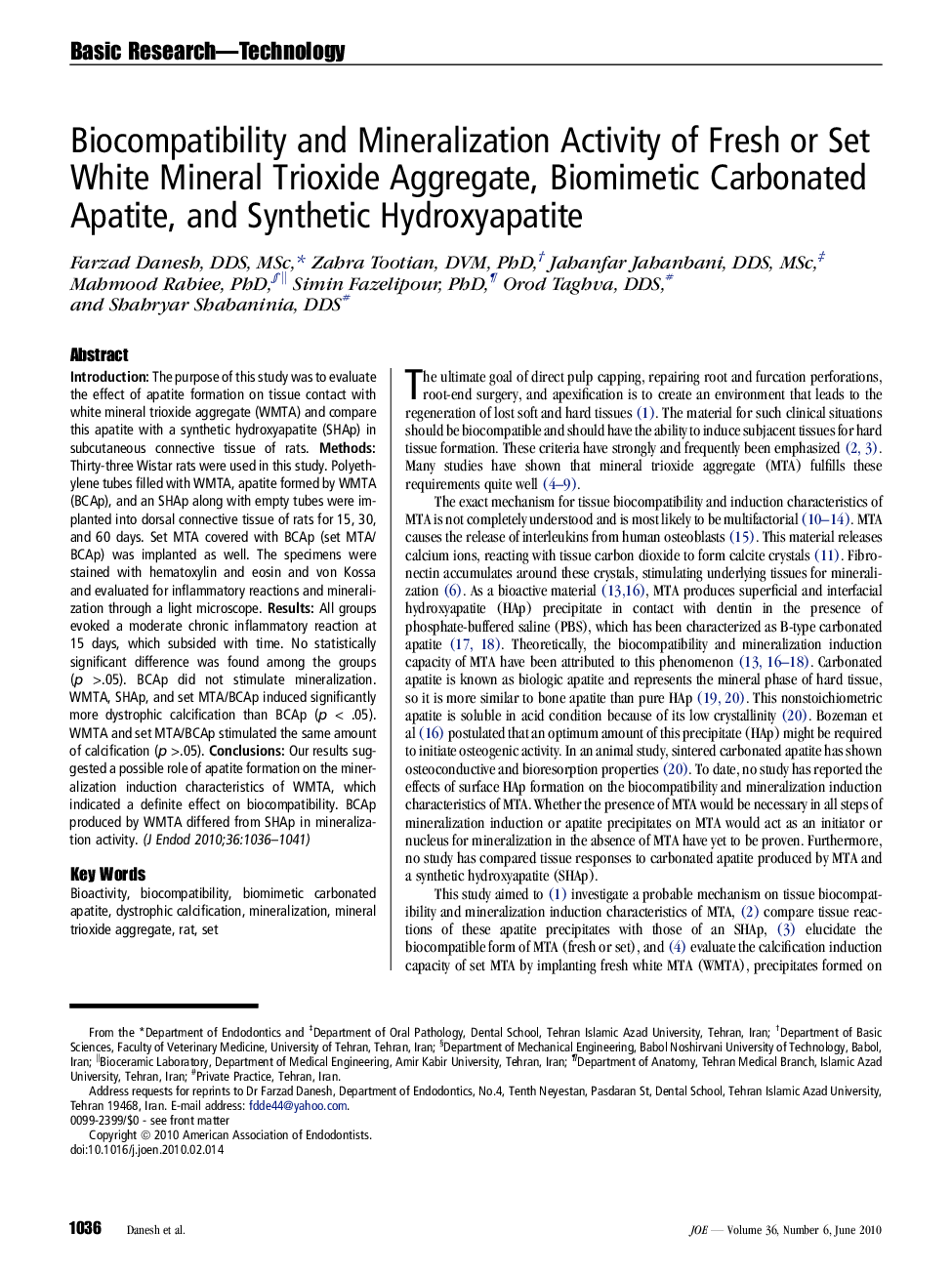| Article ID | Journal | Published Year | Pages | File Type |
|---|---|---|---|---|
| 3150605 | Journal of Endodontics | 2010 | 6 Pages |
IntroductionThe purpose of this study was to evaluate the effect of apatite formation on tissue contact with white mineral trioxide aggregate (WMTA) and compare this apatite with a synthetic hydroxyapatite (SHAp) in subcutaneous connective tissue of rats.MethodsThirty-three Wistar rats were used in this study. Polyethylene tubes filled with WMTA, apatite formed by WMTA (BCAp), and an SHAp along with empty tubes were implanted into dorsal connective tissue of rats for 15, 30, and 60 days. Set MTA covered with BCAp (set MTA/BCAp) was implanted as well. The specimens were stained with hematoxylin and eosin and von Kossa and evaluated for inflammatory reactions and mineralization through a light microscope.ResultsAll groups evoked a moderate chronic inflammatory reaction at 15 days, which subsided with time. No statistically significant difference was found among the groups (p >.05). BCAp did not stimulate mineralization. WMTA, SHAp, and set MTA/BCAp induced significantly more dystrophic calcification than BCAp (p < .05). WMTA and set MTA/BCAp stimulated the same amount of calcification (p >.05).ConclusionsOur results suggested a possible role of apatite formation on the mineralization induction characteristics of WMTA, which indicated a definite effect on biocompatibility. BCAp produced by WMTA differed from SHAp in mineralization activity.
